LOS ANGELES – The 2025 Subaru Forester unveiled here at the L.A. Auto Show is being labeled as “all-new,” but that’s really stretching the definition of “all.” It uses the same Subaru Global Platform and 2.5-liter boxer-four as the outgoing model. It has the same wheelbase, height and track width, while only adding 0.6 inch to the length and 0.5 inch to its width. The cargo area expands by a whopping 0.7 cubic-foot behind the raised back seat. But there is big news: A hybrid is coming!
So yeah, it’s new, but compared to the legitimately overhauled Honda CR-V, Kia Sportage and Hyundai Tucson of recent years, this generation didn’t exactly start with a clean slate. That said, there were a wealth of changes and updates made that should amount to a Forester better able to keep up with those newer rivals while maintaining most of the unique attributes that keep Subaru loyalists so, well, loyal.
Despite the barely changed dimensions, the look is certainly different enough to cue double takes in the REI parking lot. The grille is bigger and integrated with the headlights, while overall less fussy with fewer elements. The upper trim levels shown have ubiquitous gloss black trim in that grille, plus the mirror caps and trim between the taillights. The Sport trim level (pictured in white below) gets some bronze accents as well as similarly colored 19-inch wheels. It’s unclear what the other trim levels will look like.


Another key visual difference is the fender-wrapping plastic trim, complete with definitely-not-round shape and aero vents that reduce lift on the front tires and improve driving stability. See, a touch of WRX has found its way onto the Forester! There’s also a chunky rocker panel trim piece and strips of trim at the bases of the A- and D pillars that sorta create a floating roof look. Maybe a contrasting roof option is in the cards down the road (cough Wilderness, and no, no info about that at this time). The liftgate is more upright, which is always a good thing when it comes to packing in cargo.
Now, should you have cargo that can’t fit inside, certain versions of the 2025 Forester may represent a downgrade. While the base, Premium and Limited trim levels will continue to offer the traditional raised roof rails that allow owners to easily swap crossbars and racks between cars, the Sport and Touring trim levels shown here have flush-mounted rails that require more specialized fitments. According to Subaru carline product manager William Stokes, the Sport and Touring get the flush-mounted rails for the purposes of style and aerodynamics, and because the buyers of those on-road-oriented trims are less likely to use the rails in the first place. Stokes elaborated that the rails are just one example of Subaru adjusting its trim level structure away from the typical ladder-type setup of increasing equipment, and instead creating versions catering to different buyers. The introduction of the Forester Wilderness was the clearest example of this (its next-generation version will come later), and its popularity among those who do use racks and such basically allowed Subaru to drift the Sport and Touring in the opposite direction on the on-road/off-road graph.
Stokes also noted that the last-generation Outback Touring went with flush-mounted rails for similar style reasons, but ditched them for this generation because the Outback Wilderness was coming. It has strengthened fixed roof rails whereas other Outbacks have the unique swing-in rails that serve as their own crossbars. For complexity purposes, Subaru did not want to produce three different rail types. He didn't indicate as such, but I wouldn't be surprised if the raised rails on the lower-trim Foresters will therefore be the same strengthened ones that'll eventually appear on the next-gen Forester Wilderness. Or maybe Subaru doesn't have a problem making three types for the Forester? OK, enough about roof rails.
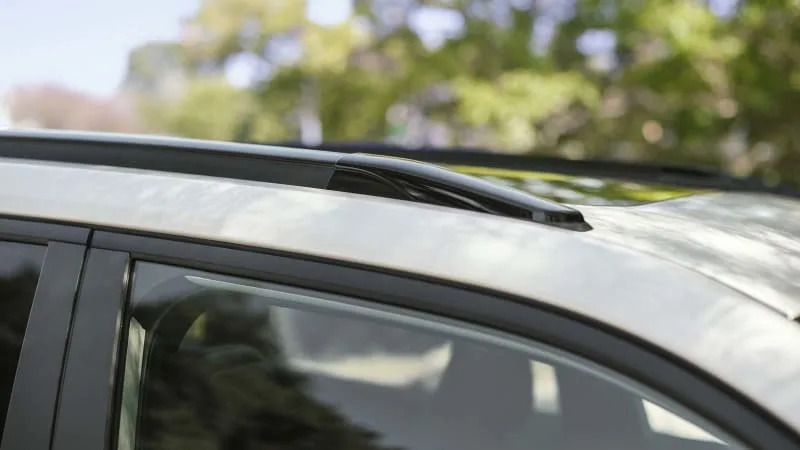


The interior design may be new to the Forester, but it’s virtually indistinguishable from the Outback, Crosstrek and Ascent apart from some dimpled surfacing on the passenger-side dash. Part of that is probably because the included 11.6-inch portrait-oriented touchscreen (and the weird dual 7-inch screen setup of the base model) doesn’t leave designers much room to work with. Both of the available touchscreen infotainment systems are indeed new to the Forester, but again, old-hat for the Subaru lineup. Which means their pretty old-hat, period, at this point. For a new generation, “all” or not, the Forester probably could’ve used something to better stay relevant for longer.
Other Forester interior firsts are an available wireless phone charger, ventilated seats and hands-free power liftgate. The seats are also more supportive, according to Subaru, and have been slimmed down for better visibility and access to the rear seats. Little hooks have been added throughout the cargo area, including two in the roof at the base of the liftgate – those were introduced for and had been exclusive to the Wilderness.
Despite the carry-over platform, there are mechanical updates. Subaru says “a full inner frame construction with stronger welding techniques and additional structural adhesive contribute to better body rigidity and lighter weight.” Handling, ride and interior noise levels apparently benefit. The steering is also enhanced with a version of the WRX’s dual-pinion electronic steering rack. Hey, there’s two gifts from the WRX!
There’s no such generosity under the hood, sadly. A 2.5-liter naturally aspirated boxer-four remains and now delivers 180 horsepower and 178 pound-feet of torque. That’s actually two of each less than before. But don’t worry, it’s still connected to a standard CVT, albeit with smoother and quieter performance, according to Subaru. Most trim levels have paddle shifters to wheel through eight simulated ratios. Subaru did not specify any engine changes, including an explanation for the slight drop. Calls for a return of the turbo engine upgrade shall continue. But hey, at least a hybrid option is now official — due one year after the gasoline model's launch, Subaru announced here in L.A.
The standard all-wheel-drive system has been revised to react quicker, improve handling and provide better control both on- and off-road. An X-Mode off-road driving mode is included on the Forester Premium, while the Sport and higher trims get two mode options based on terrain and traction.
Finally, safety remains a tip-top priority for Subaru, which anticipates the Forester will retain its IIHS Top Safety Pick status for 2025. The latest version of Subaru’s EyeSight driver assistance suite comes aboard the Forester, promising smoother and quicker reactions under a greater range of conditions. The cameras have a wider field of view, the control software has been updated and an electric brake booster added; cyclists and pedestrians will be detected sooner.
One bit of safety gear that’s actually new to the Subaru family: Emergency Stop Assist, which automatically brings the vehicle to a stop, activates the hazard lights and unlocks the doors should the driver become unresponsive while using adaptive cruise control. That’s a pretty big caveat at the end, but it’s still a good idea.
The next-generation, very-new 2025 Subaru Forester should arrive at dealers next spring. The hybrid arrives one year later, accompanied by four new all-electric models due by 2026 (and four more by 2028). Pricing will be announced closer to release.
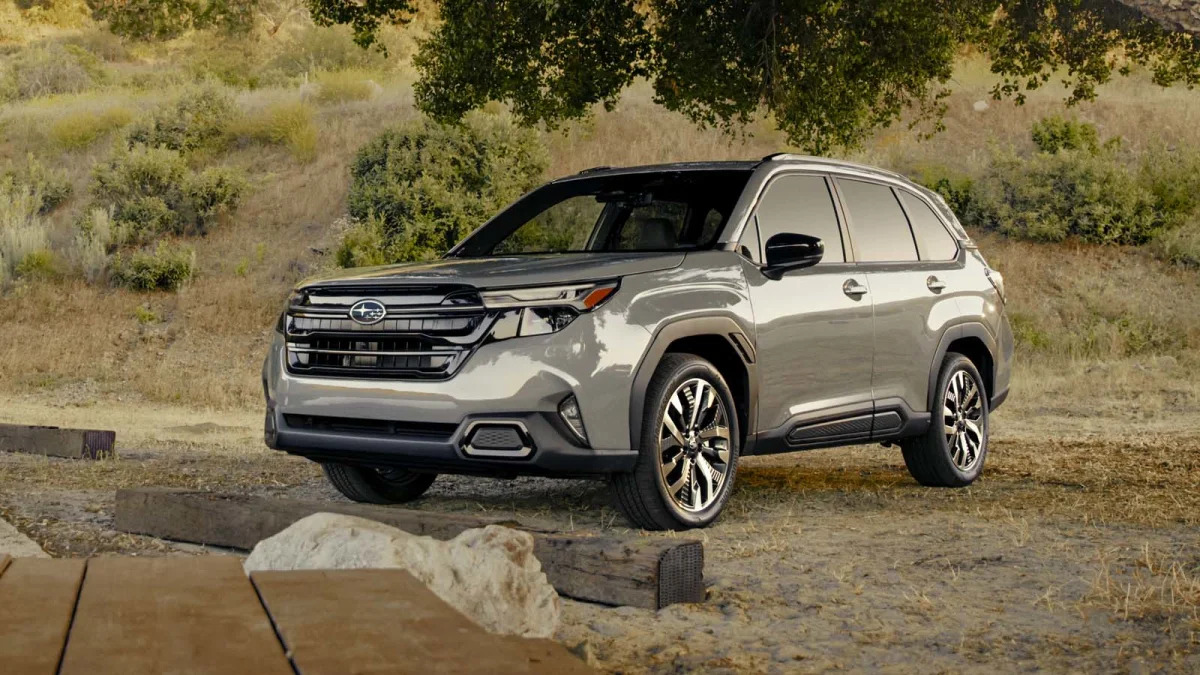
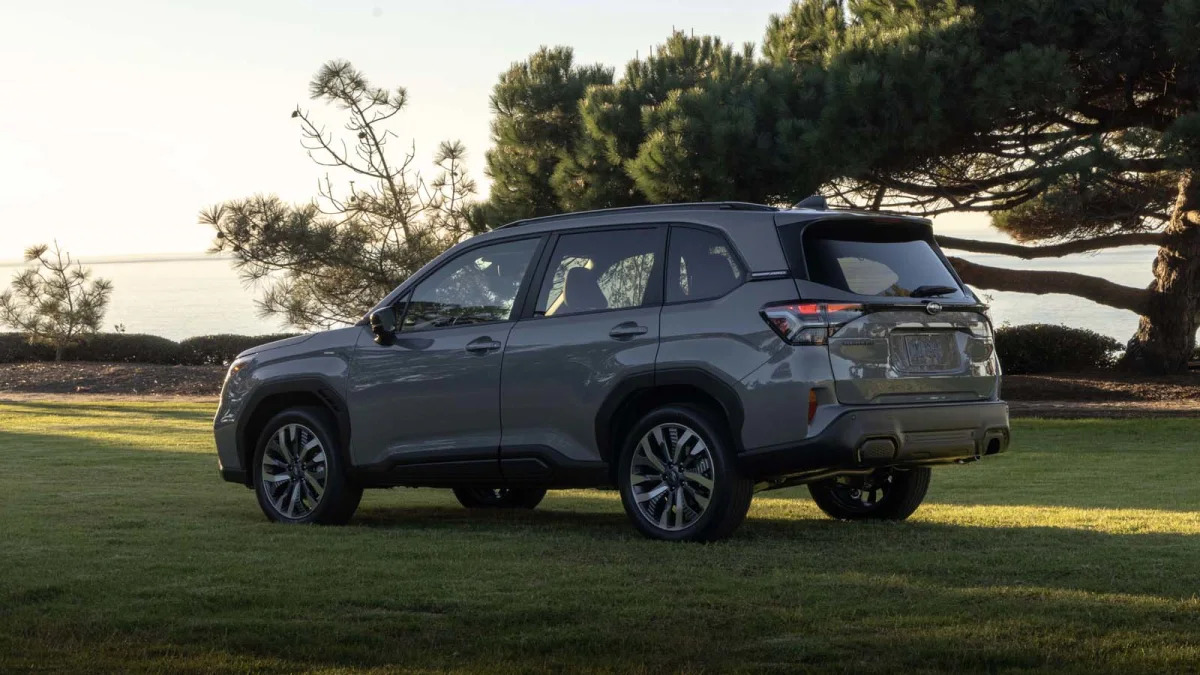


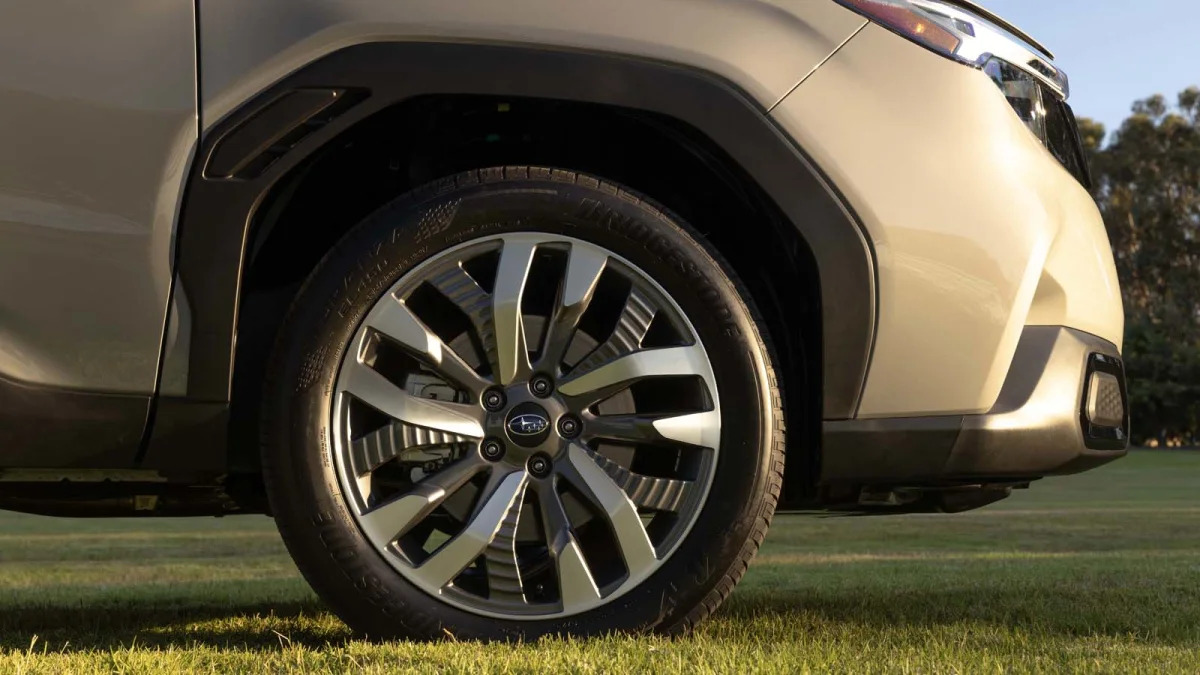














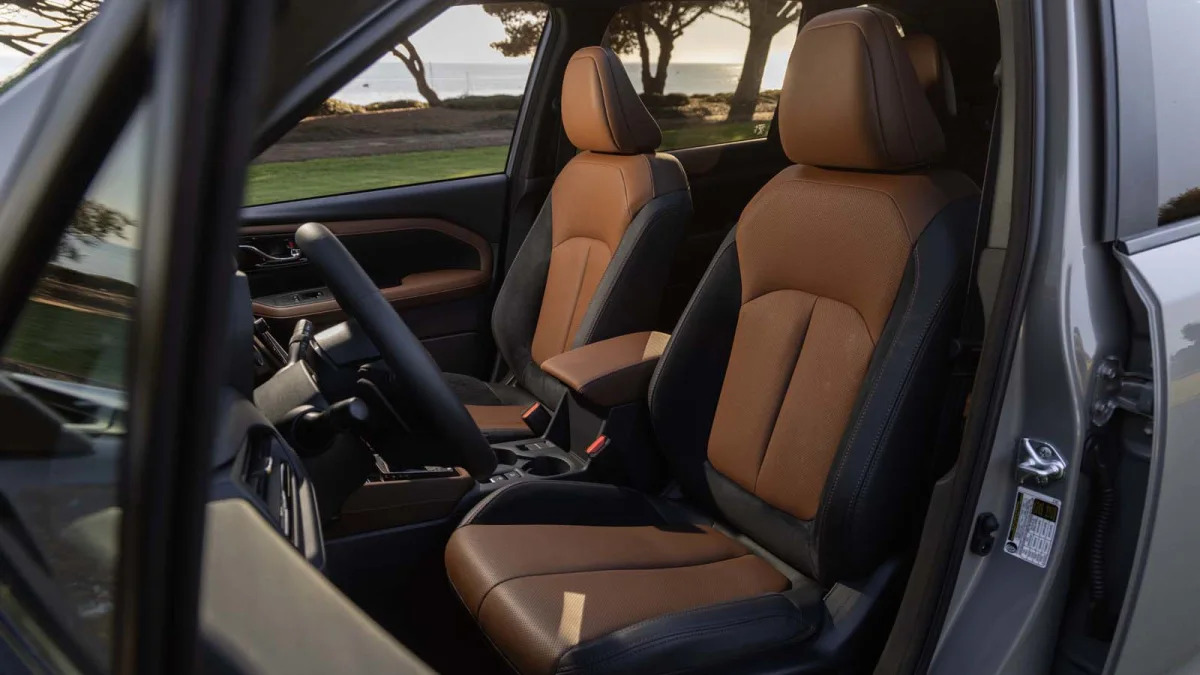





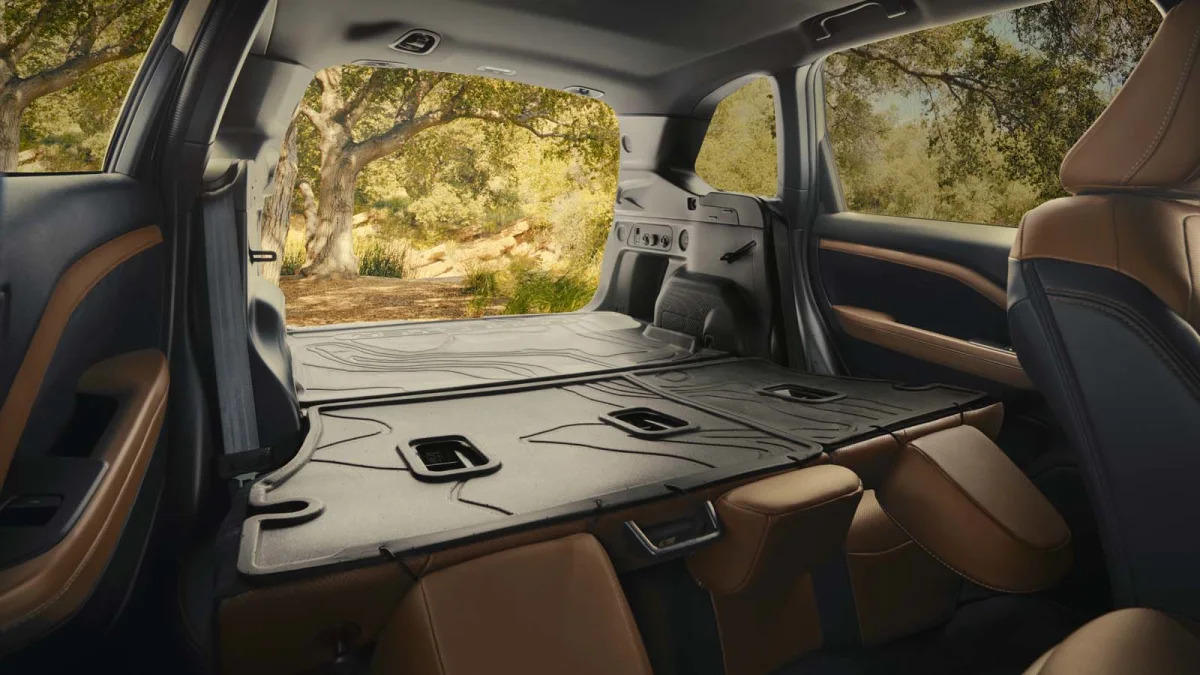
























































Sign in to post
Please sign in to leave a comment.
Continue